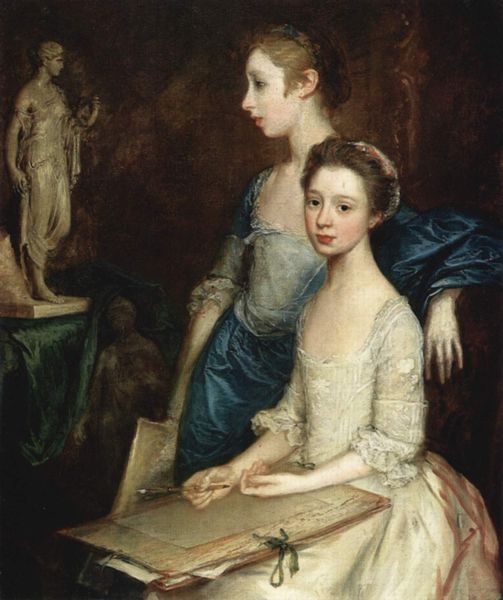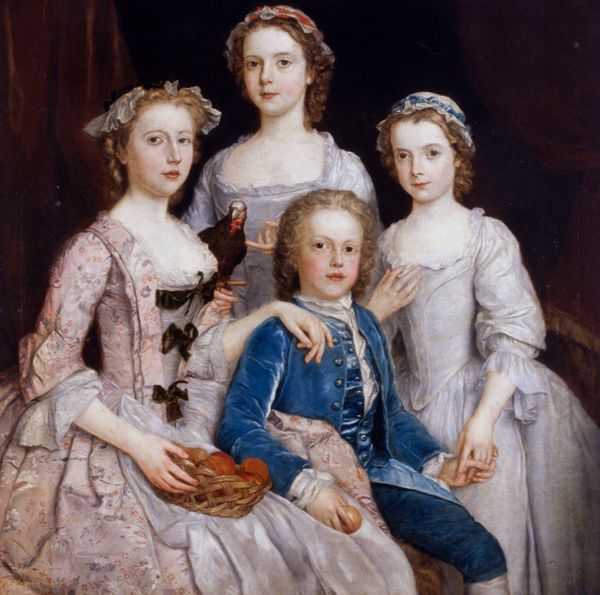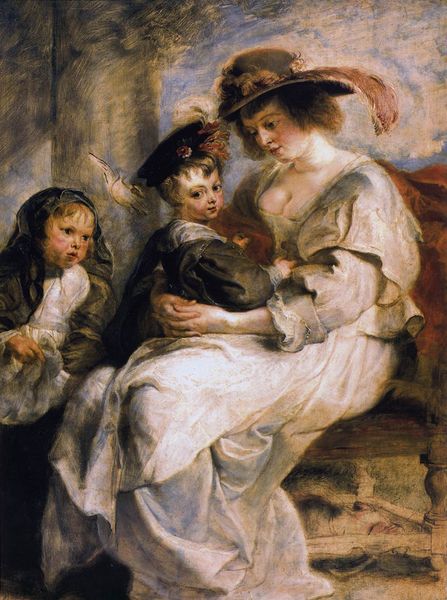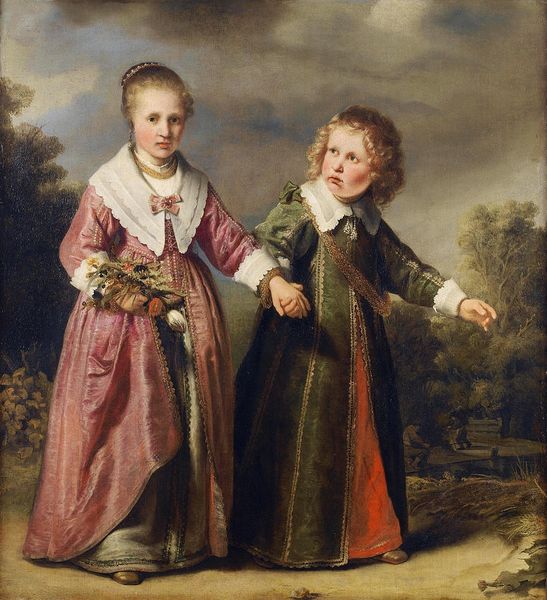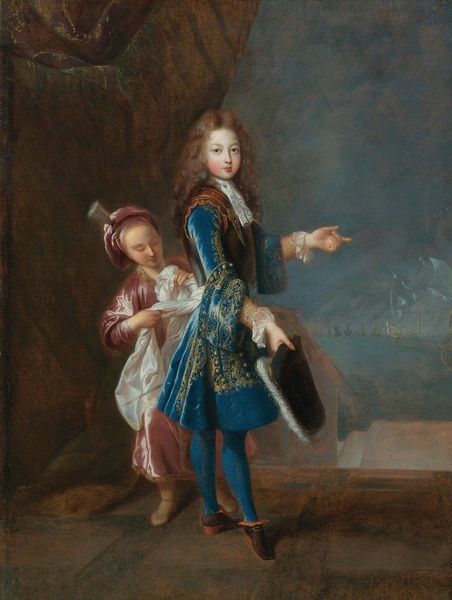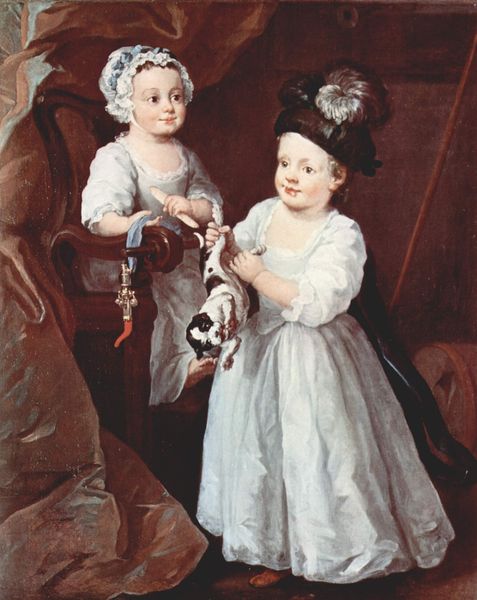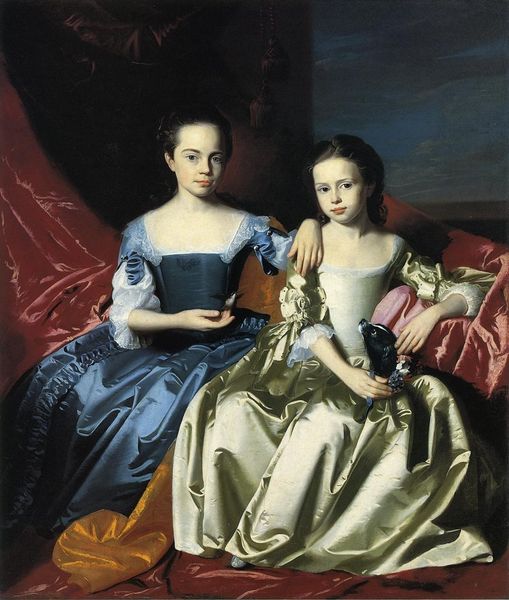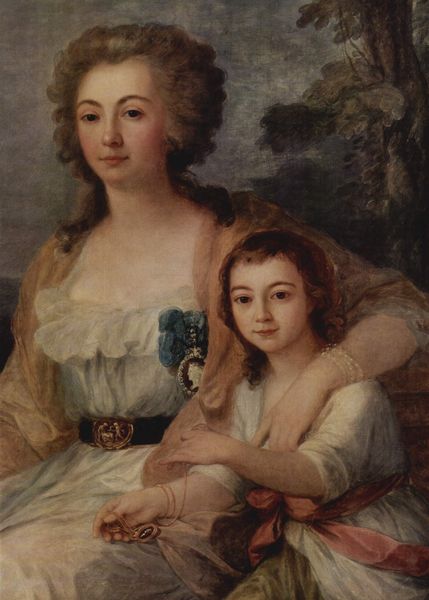
painting, oil-paint
#
portrait
#
baroque
#
painting
#
oil-paint
#
oil painting
#
child
#
underpainting
#
group-portraits
#
genre-painting
#
history-painting
#
lady
Dimensions: 130 x 162 cm
Copyright: Public domain
Curator: Here we see Anthony van Dyck's "Portrait of Philadelphia and Elisabeth Cary," completed around 1635. It's currently held at the Hermitage Museum in Saint Petersburg. Editor: My immediate impression is of the stillness, even sadness, emanating from the canvas. The muted colors and formal poses create a rather solemn mood. Curator: Absolutely. Consider the Cary sisters' position within the socio-political landscape of the time. Their father, Lucius Cary, 2nd Viscount Falkland, was a prominent intellectual and politician during a period of great upheaval, teetering between royal authority and nascent parliamentarianism. Understanding that context allows us to interpret their quietness less as childlike timidity, but perhaps as a reflection of the uncertainties and weighty expectations placed upon them as members of a powerful family during a volatile historical moment. Editor: Yes, and I am struck by the details of their attire. The silk gowns, pearl necklaces, even the gesture of one sister’s hand resting on the other, speak volumes. I cannot help but link those pearls with tears—the sorrow in their eyes as it looks as if it is about to be suppressed, as a virtue. Do you think the painting hints to the price these aristocratic girls are expected to pay? The image reminds me of those depictions where innocence, duty, and status intertwine. It makes you consider who benefits and who loses when roles like these are inherited rather than freely chosen. Curator: Precisely. And even their proximity to one another within the frame contributes to that narrative. Van Dyck was a master of representing social dynamics through spatial arrangements. Philadelphia’s stance and hand placement communicate power dynamics related to gender within 17th century families and the cultural and class hierarchy represented. Editor: I notice the family dog. Usually, a pet represents domestic harmony and status. Do you see him having a role beyond that here? Is this melancholy puppy there to show that domesticity has limits? He doesn't quite fit within this setting. Curator: I interpret the dog as an indication of class and legacy. Often family dogs were inherited by aristocracy in England. We see a strong symbol of privilege, in addition to this beautiful display of female youth. This portrait provides more than aesthetic charm. Editor: A sobering thought indeed. Well, after studying Van Dyck's brushstrokes in portraying them and their accessories I will think of this canvas in terms of social power. Curator: Indeed, it reminds us that portraiture serves as a lens into the complex interplay of identity, social expectations, and historical forces that shape lives, especially during tumultuous periods like the mid-17th century.
Comments
No comments
Be the first to comment and join the conversation on the ultimate creative platform.



